To heat a steam room, a steel or cast iron stove is most often used. It is much more compact, lighter, easier to handle and does not require a lot of installation time. However, you cannot leave the stove unprotected.
Why brick a stove in a steam room
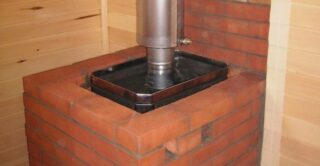
For all its advantages, metal has a number of qualities that are unsuitable for a steam room.
- Steel has excellent heat conduction. In the sauna, the metal gets hot and is dangerous for the users.
- The heat generated by the metal surface is not very pleasant.
- Metal has a low heat capacity - steel cools down as quickly as it heats up, so when heating stops, the temperature in the steam room will quickly drop.
- If the temperature rises too quickly, the air in the sauna or steam room becomes too dry.
- To get steam in the steam room, water is splashed on the walls of the stove or on the stones in the stove. The steam produced by contact between water and metal is hard and unpleasant. In addition, it spreads over a long distance, contains larger droplets and can burn.
Brick-laying a sauna stove completely solves all these problems. The brick stores heat, does not heat up too much, if water accidentally hits the walls, the resulting steam includes small particles of water and is not dangerous.
Calculation of material consumption
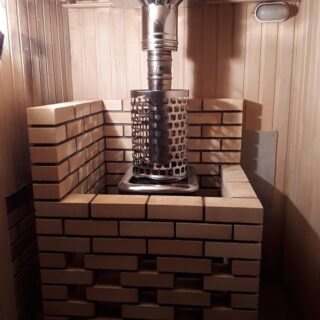
Calculating the required amount of stone for brickwork near the stove in the bath is easiest in practice. To do this, you need to put a row around the perimeter of the product at a distance of 4–5 cm from the walls of the case. Thus, a square of 3 * 3 or 4 * 4 bricks is obtained. That is, for 1 row of masonry, from 9 to 16 stones will be required.
Then the height of the stove is divided by the height of the brick - usually 65 mm and the calculation should be done. On average, 11-12 rows are required.
It is necessary to take into account not only the number of bricks, but also the total weight of the masonry and the stove. To do this, add the mass of the products with the mass of the brick screen. If the amount exceeds 700 kg, a separate foundation must be built under the stove.
Tools and materials for work
To overlay an iron or cast-iron stove in a bath with a brick with your own hands, you will need the following tools and materials:
- brick for decoration;
- ingredients for mortar - refractory clay, sand and water;
- components for the base - crushed stone, sand, cement grade M400;
- shovel, mallet, spatula;
- building level and plumb line.
Although the brick does not get as hot as metal, it is better to insulate the floor and walls around the stove with asbestos or minerite sheet.
What kind of brick to impose on an iron stove
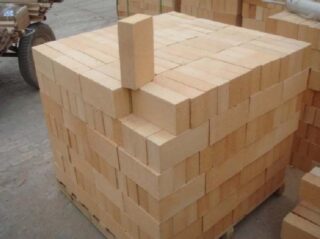
For lining the sauna stove, they take a brick that can withstand high temperatures. The varieties are as follows.
- Any red brick is better solid, but hollow is also suitable. The brick is made on the basis of clay and can withstand heating up to 1100 C.
- Fireclay is a refractory option, however, it should be lined with it only if it remains after some other work. Otherwise, the lining of the stove is too expensive.
- Lime is an unsuccessful option, since it is rather porous. It can be used in a sauna, but in a steam room it quickly collapses.
In addition to bricks, natural stone is also used, such as granite, marble or minerite slabs. However, you cannot cut such plates yourself.
The process of bricking a metal furnace
How to impose a brick on the stove in the bath with your own hands from the side of the steam room and the dressing room is described on many construction forums. The correct technology is chosen taking into account the weight of the stove and the lining, the area of the steam room, and its own capabilities.
Arrangement of the base

Even if the structure weighs less than 700 kg, it needs a base. The step-by-step instructions are as follows.
- For a boiler with a screen, a common foundation is laid. To do this, they dig a trench with a depth of 30 cm and dimensions that match the dimensions of the lining.
- The hole is half covered with large rubble, and then poured with concrete.
- If the stove is lightweight, you can put it directly on the logs. However, before installation, a sheet of asbestos cardboard or steel sheet should be laid between it and the floor.
After the concrete hardens, the masonry is performed.
Furnace screen construction
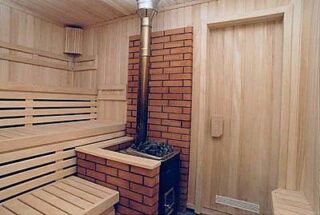
Facing according to standard technology. The recommendations are as follows:
- masonry starts from any angle and is performed in a circle;
- in the second row, vents are left to ensure air circulation between the walls of the body and the casing;
- the recommended thickness is half a brick, that is, the stone is placed on a spoon;
- dressing in half a brick is required;
- steel rods or reinforcing mesh are placed in each 3-4 row;
- for masonry, a clay solution is taken from a ratio of clay and sand 1: 1;
- seam thickness everywhere 5 mm;
- a ventilation hole is also left in the upper row of the lining;
- the openings for the blower and combustion chamber are reinforced with metal corners.
It is recommended to build a stove screen in 2 stages to strengthen the lower part of the lining.
Methods of wrapping
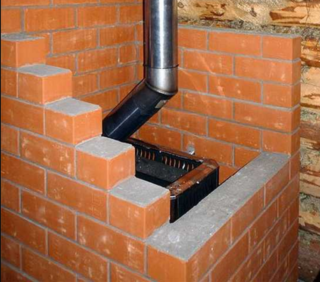
Decorating the sauna stove with bricks from the side of the dressing room and the steam room is done in 3 ways.
- Solid sheathing is decorative but somewhat impractical. The continuous screen near the stove allows for rapid heat transfer, but it also absorbs too much heat, which reduces the boiler's efficiency.
- Fencing - the wall is not made for the entire height of the heater, but only for a certain amount. The portal is purely protective, preventing accidental burns.
- A convector with air vents is the best option. The lining is equipped with ventilation holes along the entire height so that heat from the metal case along the wall gets into the room. At the same time, after the end of the firebox, the stone screen continues to radiate heat and the sauna cools down more slowly.
A gap is left between the case and the screen. Its value depends on the power of the furnace. At rates below 12 kW, a gap of 3 cm is left, at higher power it reaches 15–20 cm.
Pre-firing the furnace
Before using the bath, it is worth testing the stove. For this, 2-3 test furnaces are performed. For the first time, the minimum number of logs is laid, without bringing to the maximum temperature. Then the intensity is gradually increased.
The heating allows the brick and mortar to dry out, so that the lining gains strength and better accumulates heat.









At -10, a metal stove heats up the steam room in an hour. How long should I sit in the cold with a lined stove?